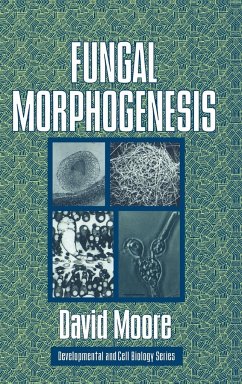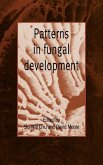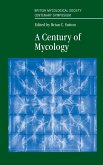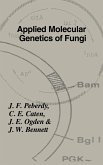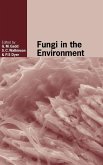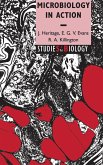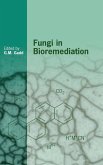David Moore
Fungal Morphogenesis
David Moore
Fungal Morphogenesis
- Gebundenes Buch
- Merkliste
- Auf die Merkliste
- Bewerten Bewerten
- Teilen
- Produkt teilen
- Produkterinnerung
- Produkterinnerung
Fungal Morphogenesis brings together, for the first time, the full scope of fungal developmental biology.
Andere Kunden interessierten sich auch für
![Patterns in Fungal Development Patterns in Fungal Development]() Siu-Wai ChiuPatterns in Fungal Development103,99 €
Siu-Wai ChiuPatterns in Fungal Development103,99 €![A Century of Mycology A Century of Mycology]() C. Sutton (ed.)A Century of Mycology148,99 €
C. Sutton (ed.)A Century of Mycology148,99 €![Ecology of Infectious Diseases in Natural Populations Ecology of Infectious Diseases in Natural Populations]() T. Grenfell / Andrew Dobson (eds.)Ecology of Infectious Diseases in Natural Populations109,99 €
T. Grenfell / Andrew Dobson (eds.)Ecology of Infectious Diseases in Natural Populations109,99 €![Applied Molecular Genetics of Fungi Applied Molecular Genetics of Fungi]() British Mycological SocietyApplied Molecular Genetics of Fungi111,99 €
British Mycological SocietyApplied Molecular Genetics of Fungi111,99 €![Fungi in the Environment Fungi in the Environment]() Geoffrey Gadd / Sarah C. Watkinson / Paul S. Dyer (eds.)Fungi in the Environment171,99 €
Geoffrey Gadd / Sarah C. Watkinson / Paul S. Dyer (eds.)Fungi in the Environment171,99 €![Microbiology in Action Microbiology in Action]() J. HeritageMicrobiology in Action174,99 €
J. HeritageMicrobiology in Action174,99 €![Fungi in Bioremediation Fungi in Bioremediation]() G. M. Gadd (ed.)Fungi in Bioremediation233,99 €
G. M. Gadd (ed.)Fungi in Bioremediation233,99 €-
-
-
Fungal Morphogenesis brings together, for the first time, the full scope of fungal developmental biology.
Hinweis: Dieser Artikel kann nur an eine deutsche Lieferadresse ausgeliefert werden.
Hinweis: Dieser Artikel kann nur an eine deutsche Lieferadresse ausgeliefert werden.
Produktdetails
- Produktdetails
- Verlag: Cambridge University Press
- Seitenzahl: 486
- Erscheinungstermin: 3. Dezember 2014
- Englisch
- Abmessung: 235mm x 157mm x 33mm
- Gewicht: 933g
- ISBN-13: 9780521552950
- ISBN-10: 0521552958
- Artikelnr.: 34557279
- Herstellerkennzeichnung
- Libri GmbH
- Europaallee 1
- 36244 Bad Hersfeld
- gpsr@libri.de
- Verlag: Cambridge University Press
- Seitenzahl: 486
- Erscheinungstermin: 3. Dezember 2014
- Englisch
- Abmessung: 235mm x 157mm x 33mm
- Gewicht: 933g
- ISBN-13: 9780521552950
- ISBN-10: 0521552958
- Artikelnr.: 34557279
- Herstellerkennzeichnung
- Libri GmbH
- Europaallee 1
- 36244 Bad Hersfeld
- gpsr@libri.de
David Moore was born in Ireland and later emigrated to Montreal. Moore published his first collection of poetry, Silence, in 2016. Other books followed: Poems 2020, The March of the Copylong Shadows, 2020, Fame and Fortune, The Copyright Curse of Cassandra, 2021, The Life of a Slave, 2022, and The Timeless Love of Billy B for Scheherazade, 2022. Evening Light over Kouraki is his first novel. He is presently working on another full-length novel, Things Not Said. Moore has already made his mark as a visual artist in Canada, the USA, and Europe.
Preface
1. Fungi: a place in time and space
1.1. Fungal lifestyle
1.2. The essential nature of fungi
1.3. Evolutionary origins
1.4. Evidence from fossils
1.5. Origin of development
1.6. Evolution within Kingdom Fungi
1.7. Horizontal transfer of genetic information
1.8. Comparing and combining
2. Hyphal growth
2.1. Fungal cells
2.2. Hyphal tip extension
2.3. Septation
2.4. Branching
2.5. Growth kinetics
2.6. Dynamic boundaries
3. Metabolism and biochemistry of hyphal systems
3.1. Nutrients in nature
3.2. Extracellular polymer-degrading enzymes
3.3. Production, location, regulation and use of degradative enzymes
3.4. The menu of basic nutrients
3.5. The wall and membrane as barriers
3.6. The flow of solutes
3.7. Transport strategy
3.8. Water relations
3.9. Intermediary metabolism
3.10. Carbon metabolism
3.11. Fat catabolism
3.12. Nitrogen metabolism
3.13. Secondary metabolism
4. Physiological factors favoring morphogenesis
4.1. Nutrition
4.2. Adaptations of metabolism
4.3. Environmental variables
5. The genetic component of hyphal differentiation
5.1. Nuclear divisions
5.2. Sexuality in fungi
5.3. Shape and form in yeasts and hyphae
5.4. Sexual reproductive structures
5.5. Overview
6. Development of form
6.1. Initiation of structures
6.2. Cell differentiation
6.3. Tissue domains
6.4. Strategies of basidiomycete fruiting
6.5. Commitment, regeneration and senescence
6.6. Degeneration, senescence and death
7. The keys to form and structure
7.1. The nature of morphogenetic control
7.2. Fungal morphogenesis
References
Index.
1. Fungi: a place in time and space
1.1. Fungal lifestyle
1.2. The essential nature of fungi
1.3. Evolutionary origins
1.4. Evidence from fossils
1.5. Origin of development
1.6. Evolution within Kingdom Fungi
1.7. Horizontal transfer of genetic information
1.8. Comparing and combining
2. Hyphal growth
2.1. Fungal cells
2.2. Hyphal tip extension
2.3. Septation
2.4. Branching
2.5. Growth kinetics
2.6. Dynamic boundaries
3. Metabolism and biochemistry of hyphal systems
3.1. Nutrients in nature
3.2. Extracellular polymer-degrading enzymes
3.3. Production, location, regulation and use of degradative enzymes
3.4. The menu of basic nutrients
3.5. The wall and membrane as barriers
3.6. The flow of solutes
3.7. Transport strategy
3.8. Water relations
3.9. Intermediary metabolism
3.10. Carbon metabolism
3.11. Fat catabolism
3.12. Nitrogen metabolism
3.13. Secondary metabolism
4. Physiological factors favoring morphogenesis
4.1. Nutrition
4.2. Adaptations of metabolism
4.3. Environmental variables
5. The genetic component of hyphal differentiation
5.1. Nuclear divisions
5.2. Sexuality in fungi
5.3. Shape and form in yeasts and hyphae
5.4. Sexual reproductive structures
5.5. Overview
6. Development of form
6.1. Initiation of structures
6.2. Cell differentiation
6.3. Tissue domains
6.4. Strategies of basidiomycete fruiting
6.5. Commitment, regeneration and senescence
6.6. Degeneration, senescence and death
7. The keys to form and structure
7.1. The nature of morphogenetic control
7.2. Fungal morphogenesis
References
Index.
Preface
1. Fungi: a place in time and space
1.1. Fungal lifestyle
1.2. The essential nature of fungi
1.3. Evolutionary origins
1.4. Evidence from fossils
1.5. Origin of development
1.6. Evolution within Kingdom Fungi
1.7. Horizontal transfer of genetic information
1.8. Comparing and combining
2. Hyphal growth
2.1. Fungal cells
2.2. Hyphal tip extension
2.3. Septation
2.4. Branching
2.5. Growth kinetics
2.6. Dynamic boundaries
3. Metabolism and biochemistry of hyphal systems
3.1. Nutrients in nature
3.2. Extracellular polymer-degrading enzymes
3.3. Production, location, regulation and use of degradative enzymes
3.4. The menu of basic nutrients
3.5. The wall and membrane as barriers
3.6. The flow of solutes
3.7. Transport strategy
3.8. Water relations
3.9. Intermediary metabolism
3.10. Carbon metabolism
3.11. Fat catabolism
3.12. Nitrogen metabolism
3.13. Secondary metabolism
4. Physiological factors favoring morphogenesis
4.1. Nutrition
4.2. Adaptations of metabolism
4.3. Environmental variables
5. The genetic component of hyphal differentiation
5.1. Nuclear divisions
5.2. Sexuality in fungi
5.3. Shape and form in yeasts and hyphae
5.4. Sexual reproductive structures
5.5. Overview
6. Development of form
6.1. Initiation of structures
6.2. Cell differentiation
6.3. Tissue domains
6.4. Strategies of basidiomycete fruiting
6.5. Commitment, regeneration and senescence
6.6. Degeneration, senescence and death
7. The keys to form and structure
7.1. The nature of morphogenetic control
7.2. Fungal morphogenesis
References
Index.
1. Fungi: a place in time and space
1.1. Fungal lifestyle
1.2. The essential nature of fungi
1.3. Evolutionary origins
1.4. Evidence from fossils
1.5. Origin of development
1.6. Evolution within Kingdom Fungi
1.7. Horizontal transfer of genetic information
1.8. Comparing and combining
2. Hyphal growth
2.1. Fungal cells
2.2. Hyphal tip extension
2.3. Septation
2.4. Branching
2.5. Growth kinetics
2.6. Dynamic boundaries
3. Metabolism and biochemistry of hyphal systems
3.1. Nutrients in nature
3.2. Extracellular polymer-degrading enzymes
3.3. Production, location, regulation and use of degradative enzymes
3.4. The menu of basic nutrients
3.5. The wall and membrane as barriers
3.6. The flow of solutes
3.7. Transport strategy
3.8. Water relations
3.9. Intermediary metabolism
3.10. Carbon metabolism
3.11. Fat catabolism
3.12. Nitrogen metabolism
3.13. Secondary metabolism
4. Physiological factors favoring morphogenesis
4.1. Nutrition
4.2. Adaptations of metabolism
4.3. Environmental variables
5. The genetic component of hyphal differentiation
5.1. Nuclear divisions
5.2. Sexuality in fungi
5.3. Shape and form in yeasts and hyphae
5.4. Sexual reproductive structures
5.5. Overview
6. Development of form
6.1. Initiation of structures
6.2. Cell differentiation
6.3. Tissue domains
6.4. Strategies of basidiomycete fruiting
6.5. Commitment, regeneration and senescence
6.6. Degeneration, senescence and death
7. The keys to form and structure
7.1. The nature of morphogenetic control
7.2. Fungal morphogenesis
References
Index.

